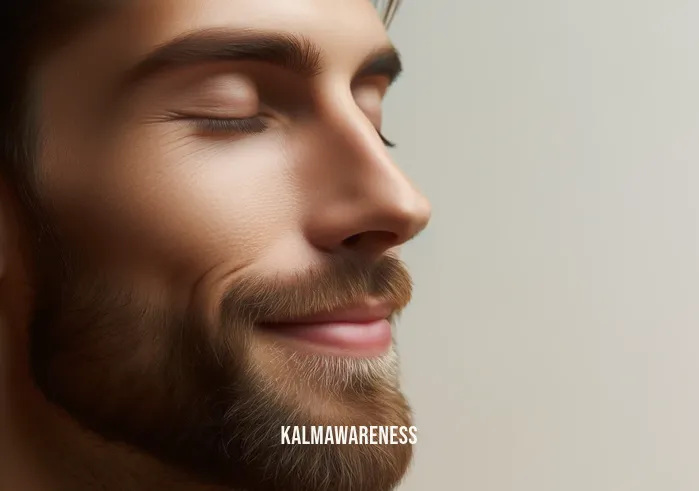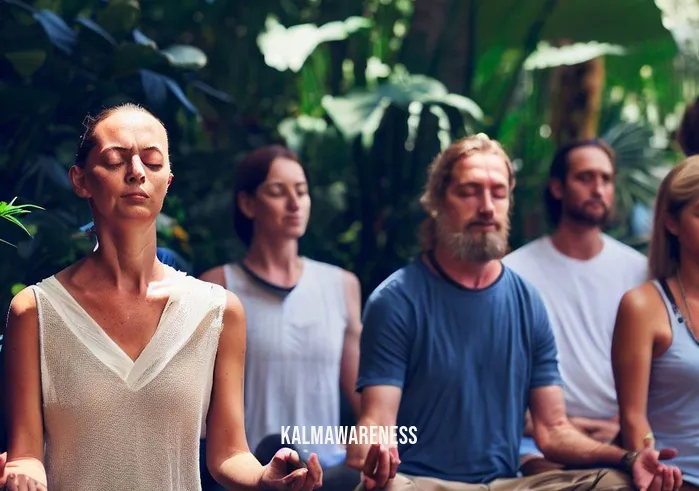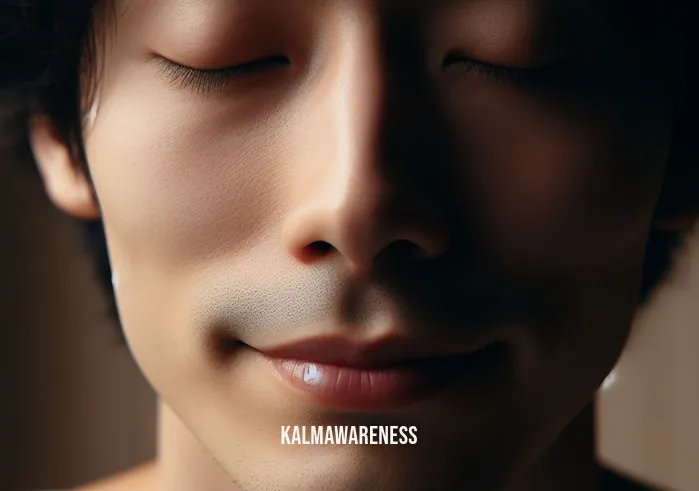Exploring the Power of Belleruth Naparstek’s Guided Imagery for Anxiety Relief
The journey toward mental well-being often involves exploring various therapeutic methods to find what resonates best with an individual’s needs. Among these, guided imagery, especially as developed by Belleruth Naparstek, has emerged as a powerful tool in managing anxiety. This segment delves into the intricate world of Belleruth Naparstek guided imagery anxiety, exploring its principles, benefits, and how it differs from other meditation practices, paving the way for a deeper understanding in the subsequent chapters.
Understanding Guided Imagery and Its Role in Anxiety Management
Guided imagery is a relaxation technique that utilizes the power of visualization to induce calmness and tranquility. This method involves a series of mental images that draw upon all the senses, creating a immersive experience. Belleruth Naparstek, a renowned practitioner in the field of guided imagery, has specifically tailored this technique to address anxiety and stress-related issues.
The Science Behind Guided Imagery
At its core, guided imagery works by tapping into the subconscious mind, where emotional and psychological processes are deeply rooted. This technique aims to modify the way the brain perceives and responds to stress and anxiety, helping to reduce the physiological symptoms associated with these conditions. Studies have shown that regular practice can lead to significant improvements in anxiety levels, as well as enhance overall well-being.
The Distinctive Approach of Belleruth Naparstek
Belleruth Naparstek’s approach to guided imagery is unique in its structure and content. Her programs often include soothing narratives, calming music, and nature sounds, designed to engage the listener’s attention and transport them to a state of deep relaxation. This method not only addresses anxiety but also promotes a holistic sense of health and well-being.
Tailoring Imagery to Individual Needs
One of Naparstek’s key strengths is her ability to create imagery that resonates with individuals’ specific anxiety triggers and concerns. This personalization makes her guided imagery sessions more effective in addressing the root causes of anxiety, leading to more profound and lasting results.
Comparing Guided Imagery with Other Meditation Practices
While guided imagery shares similarities with other meditation practices, such as mindfulness and EMDR meditation, it differs in its approach and focus. Guided imagery is more directive and story-like, guiding the listener through a series of visualizations, whereas other practices often focus on awareness and observation of thoughts without direct guidance.
The Role of Visualization in Guided Imagery
Visualization is a key component of guided imagery, setting it apart from practices that emphasize detachment or observation of thoughts. In guided imagery, the vivid and detailed visualizations serve as a mental escape, providing a safe space where anxiety and stress can be released and managed.
The Benefits of Belleruth Naparstek’s Guided Imagery for Anxiety
The benefits of Naparstek’s guided imagery for anxiety are manifold. It not only helps in reducing the immediate symptoms of anxiety but also contributes to long-term resilience against stress. Participants often report a heightened sense of peace, improved sleep quality, and a greater ability to cope with stressors in daily life. Additionally, this practice can be a complement to other therapeutic techniques, like mindful movement and floating meditation, enhancing their effectiveness.
Accessibility and Ease of Practice
Another significant advantage of Naparstek’s guided imagery is its accessibility. It can be practiced anywhere and does not require any special equipment or extensive training, making it a convenient option for individuals seeking a flexible and adaptable method to manage their anxiety.
In the next chapter, we will delve deeper into how Belleruth Naparstek’s guided imagery works, exploring the different components of her sessions and the psychological mechanisms at play. We will also look at real-life examples and testimonials from individuals who have found relief through this method. Stay tuned to uncover the transformative potential of guided imagery in managing anxiety and enhancing overall well-being.

Harnessing the Healing Power of Guided Imagery in Anxiety Management
In this segment, we delve further into the essence and effectiveness of Belleruth Naparstek’s guided imagery technique, specifically tailored for anxiety relief. By expanding on the foundations laid in the first chapter, this part aims to provide a more detailed understanding of how this method works, its various components, and its profound impact on mental health.
The Components of Belleruth Naparstek’s Guided Imagery Sessions
Belleruth Naparstek’s guided imagery sessions are meticulously crafted, combining various elements to maximize their therapeutic effect. Here’s a breakdown of these key components:
- Narrative Guidance: Each session includes a carefully scripted narrative that leads the listener through a series of calming and restorative visualizations.
- Soothing Background Music: Soft, melodic tunes accompany the narrative, enhancing the immersive experience.
- Nature Sounds: Sounds of nature, like flowing water or rustling leaves, are often integrated to deepen the sense of tranquility.
- Personalized Imagery: The visualizations are designed to resonate with individual experiences and anxiety triggers, making them more effective.
The Impact of Guided Imagery on the Mind and Body
Guided imagery, particularly in the style of Belleruth Naparstek, impacts both the mind and body, offering a holistic approach to anxiety management. Here’s a glimpse into how this technique influences various aspects:
- Reduction of Anxiety Symptoms: It directly addresses the symptoms of anxiety, promoting a sense of calmness and relaxation.
- Enhancement of Emotional Resilience: Regular practice strengthens emotional resilience, helping individuals better manage stress.
- Improved Sleep Quality: Many users report improved sleep patterns, which is crucial for overall well-being.
- Enhanced Coping Mechanisms: It provides tools and strategies for coping with daily stressors more effectively.
Comparison Table: Guided Imagery vs. Other Therapeutic Practices
To illustrate the uniqueness of Belleruth Naparstek’s guided imagery, let’s compare it with other therapeutic practices:
| Aspect | Belleruth Naparstek’s Guided Imagery | Mindfulness Meditation | EMDR Therapy |
|---|---|---|---|
| Focus | Personalized visualizations | Present moment awareness | Processing of traumatic memories |
| Method | Narrative-driven, with music and nature sounds | Observation of thoughts, feelings, and sensations | Bilateral stimulation, guided by a therapist |
| Outcome | Anxiety relief, emotional healing | Stress reduction, increased self-awareness | Trauma resolution, decreased distress from memories |
| Duration | Set duration per session | Flexible, as per individual preference | Specific to treatment plan |
| Accessibility | Easy to practice independently | Requires ongoing practice for effectiveness | Guided by a trained professional |
Advancing Beyond Traditional Meditation
While traditional meditation practices like mindful breathing focus on awareness and detachment, Belleruth Naparstek’s guided imagery introduces a more active and engaging approach. This method is particularly beneficial for those who find it challenging to quiet their minds through conventional meditation techniques.
Exploring the Synergy with Other Practices
Interestingly, guided imagery can be seamlessly integrated with other practices to enhance their effectiveness. For instance, combining it with hand yoga poses or urban meditations can provide a more comprehensive approach to anxiety management, addressing both the physical and psychological aspects.
What’s Next: Unveiling the Deeper Layers
In the upcoming chapter, we will explore real-life case studies and testimonials that highlight the transformative effects of Belleruth Naparstek’s guided imagery on individuals struggling with anxiety. We’ll also examine how this technique can be adapted to various lifestyles and circumstances, making it a versatile tool for mental health. Stay tuned to uncover more about this profound practice and its far-reaching benefits.

Transformative Journeys: Real-Life Stories of Overcoming Anxiety with Guided Imagery
In this chapter, we delve into the heartwarming and inspiring stories of individuals who have found solace and healing through Belleruth Naparstek’s guided imagery for anxiety. These narratives not only provide a testament to the effectiveness of this approach but also offer hope and inspiration for those seeking relief from the grip of anxiety.
The Power of Personal Experiences
Real-life examples serve as powerful beacons of hope, illustrating the profound impact of guided imagery on mental health. Here are some of the most compelling stories:
Overcoming Chronic Anxiety
“After years of battling with anxiety, I found peace through guided imagery. It was like a light in the darkness, guiding me to a place of calm.” – A testimonial from a long-time anxiety sufferer who found relief through guided meditation for anxiety attacks.
Transforming Stress into Serenity
“I was skeptical at first, but after just a few sessions, I felt a significant shift in my stress levels. Guided imagery has been a game-changer for me.” – Shared by an individual who integrated guided imagery with relaxing techniques to combat daily stress.
A Journey from Panic to Peace
“Each session of guided imagery felt like a journey from the depths of panic to a haven of peace. It’s something I never thought possible.” – Expressed by someone who overcame severe panic attacks with the help of Belleruth Naparstek’s techniques.
The Role of Guided Imagery in Emotional Healing
These stories highlight the transformative potential of guided imagery in addressing deep-seated emotional issues. By tapping into the subconscious, guided imagery enables individuals to confront and soothe their anxieties, leading to lasting change.
Building Emotional Resilience
Guided imagery not only alleviates immediate anxiety symptoms but also fosters long-term emotional resilience. This is particularly evident in those who have incorporated this practice into their daily routines, as seen in the narrative of a person who used binaural beats for migraine alongside guided imagery to manage stress-related headaches.
The Synergy of Guided Imagery with Other Practices
The integration of guided imagery with other relaxation techniques has shown remarkable results. For instance, combining it with practices like floating meditation or clearing energy meditation has enhanced its efficacy, providing a more comprehensive approach to mental wellness.
Quotes That Echo Hope and Healing
Let these quotes from individuals who have experienced the benefits of guided imagery for anxiety resonate with hope:
- “In the midst of chaos, guided imagery was my sanctuary. It taught me to find peace within myself.” – An inspiring reflection on the inner peace achieved through this practice.
- “Each session felt like shedding a layer of anxiety, revealing a stronger, calmer me.” – Expressing the gradual yet profound transformation experienced.
- “Guided imagery was not just a treatment; it was a journey to self-discovery and healing.” – Highlighting the deeper emotional and psychological benefits.
Looking Ahead: The Path to Mastery
In the next chapter, we will explore how to integrate guided imagery into daily life, making it a sustainable practice for long-term anxiety management. We’ll also provide practical tips and strategies to enhance the effectiveness of this technique, helping readers embark on their own journeys of healing and self-discovery. Continue reading to discover how to make guided imagery a part of your wellness toolkit and transform your relationship with anxiety.

Integrating Guided Imagery into Daily Life for Anxiety Relief
As we continue our exploration of Belleruth Naparstek’s guided imagery for anxiety, this chapter focuses on practical applications. Here, we break down how to integrate this powerful tool into everyday life, ensuring that the benefits of guided imagery are not just theoretical but also tangible and accessible.
Key Elements of Effective Guided Imagery Practice
To fully harness the benefits of Belleruth Naparstek’s guided imagery, certain elements are crucial. Here’s what makes a guided imagery session effective:
- Consistency: Regular practice is key to experiencing long-term benefits.
- Quiet Environment: Choosing a calm space free from distractions enhances focus.
- Comfortable Posture: Whether sitting or lying down, being comfortable is essential.
- Open Mindset: Approach each session with openness and without preconceptions.
Daily Integration of Guided Imagery for Anxiety Management
Incorporating guided imagery into your daily routine can be simple and flexible. Here are some suggestions:
- Morning Routine: Start your day with a short session to set a calm tone.
- Evening Wind-Down: Use guided imagery before bedtime to ensure restful sleep.
- During Breaks: A brief session during the day can recharge your mental energy.
- In Response to Stress: When feeling anxious, a quick session can provide immediate relief.
Synergy with Other Relaxation Techniques
Combining guided imagery with other techniques can enhance its effectiveness. Consider these pairings:
- With Mindful Movement: Pairing guided imagery with mindful movement can amplify relaxation.
- Alongside Breathing Exercises: Integrating it with breathing exercises can deepen the calming effect.
Overcoming Common Challenges in Practice
While integrating guided imagery into your life, you might face certain challenges. Here’s how to address them:
- Finding Time: Even short sessions are beneficial; try to incorporate them into your routine.
- Distractions: Use headphones and choose a quiet time to minimize interruptions.
- Skepticism: Give it time and be open to experiencing its benefits gradually.
Advancing Your Practice: Tips for Long-Term Success
To ensure the sustainability of your guided imagery practice, consider the following tips:
- Set Realistic Goals: Start with short sessions and gradually increase the duration.
- Track Your Progress: Keeping a journal can help you notice changes and improvements.
- Seek Support: Joining a community or group can provide motivation and encouragement.
Preparing for the Final Chapter: Mastering Guided Imagery for Anxiety Relief
As we approach the conclusion of our exploration, the final chapter will focus on mastering the art of guided imagery for anxiety relief. We will delve into advanced techniques, explore how to personalize your practice further, and provide guidance on sustaining this beneficial practice over the long term. Stay tuned to gain deeper insights and skills to make Belleruth Naparstek’s guided imagery an integral part of your journey towards mental well-being.

Embracing Calm: A Journey Through Guided Imagery for Anxiety Relief
As we conclude our exploration of Belleruth Naparstek’s guided imagery for anxiety, it’s time to reflect on the insights gained and the transformative journey we’ve undertaken. This final chapter aims to leave you with a sense of empowerment and a toolkit of techniques to navigate the ebb and flow of life’s anxieties.
Reflecting on Our Guided Imagery Journey
Throughout these chapters, we’ve delved into the multifaceted world of guided imagery for anxiety relief. We’ve explored its key components, the inspiring stories of those who have benefited from it, practical ways to integrate it into daily life, and tips for advancing your practice. Here’s a brief recap of the ground we’ve covered:
- The Basics of Guided Imagery: Understanding its components and how it differs from other forms of meditation.
- Personal Stories of Transformation: Real-life examples showing the profound impact of guided imagery on managing anxiety.
- Practical Integration: Tips for incorporating guided imagery into everyday routines.
- Overcoming Challenges: Solutions for common obstacles in maintaining a regular practice.
Applying Guided Imagery in Real Life
Now that you’re equipped with this knowledge, it’s time to apply it in your life. Remember, the journey of managing anxiety is deeply personal, and guided imagery offers a flexible and accessible tool that can be adapted to your unique needs and circumstances.
Continuing Your Exploration
Our exploration doesn’t have to end here. For those eager to delve deeper into the world of mindfulness and relaxation techniques, there are abundant resources available. Consider revisiting earlier chapters to reinforce your understanding or explore other topics like urban meditations and mindful movement.
A Heartfelt Thank You to Our Readers
We extend our deepest gratitude to you, our readers, for embarking on this journey with us. Your commitment to exploring new avenues for well-being is commendable, and we hope this series has been enlightening and transformative.
Looking Forward to More Insightful Content
The journey into self-discovery and mental well-being is ongoing, and we are excited to bring you more insightful content in our future editions. Whether it’s exploring new relaxation techniques, understanding the science of stress, or discovering the latest trends in mental health, we are here to guide and support you.
A Call to Action: Embrace Your Journey
As we conclude, we encourage you to take the first step or continue on your path of managing anxiety with guided imagery. Experiment with the techniques, listen to your body and mind, and find what works best for you. Remember, every step forward, no matter how small, is progress in the journey toward a calmer, more centered you.
Thank you for joining us on this enlightening exploration of Belleruth Naparstek’s guided imagery for anxiety. We look forward to sharing more journeys with you, guiding you towards health, happiness, and holistic well-being.




